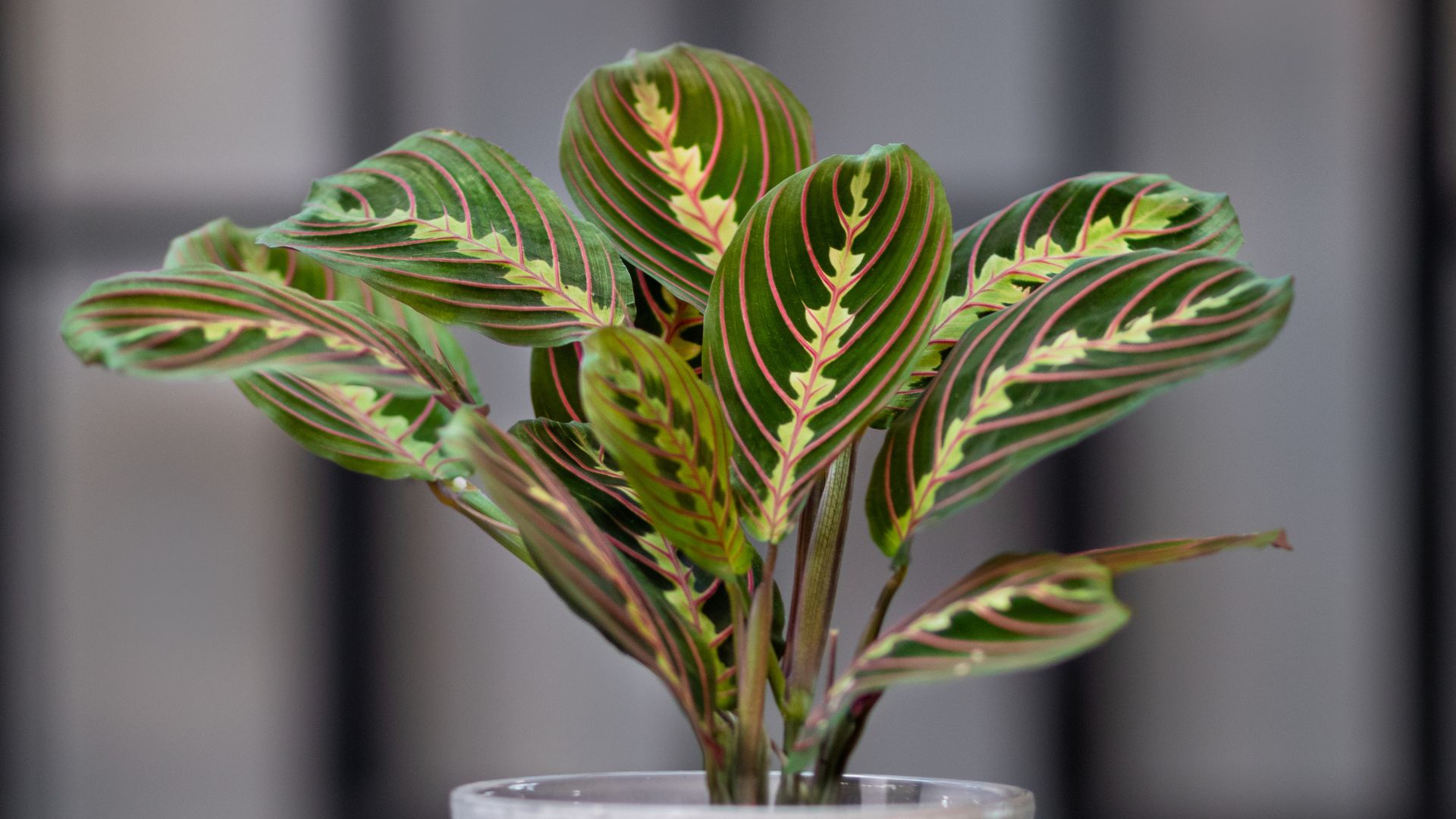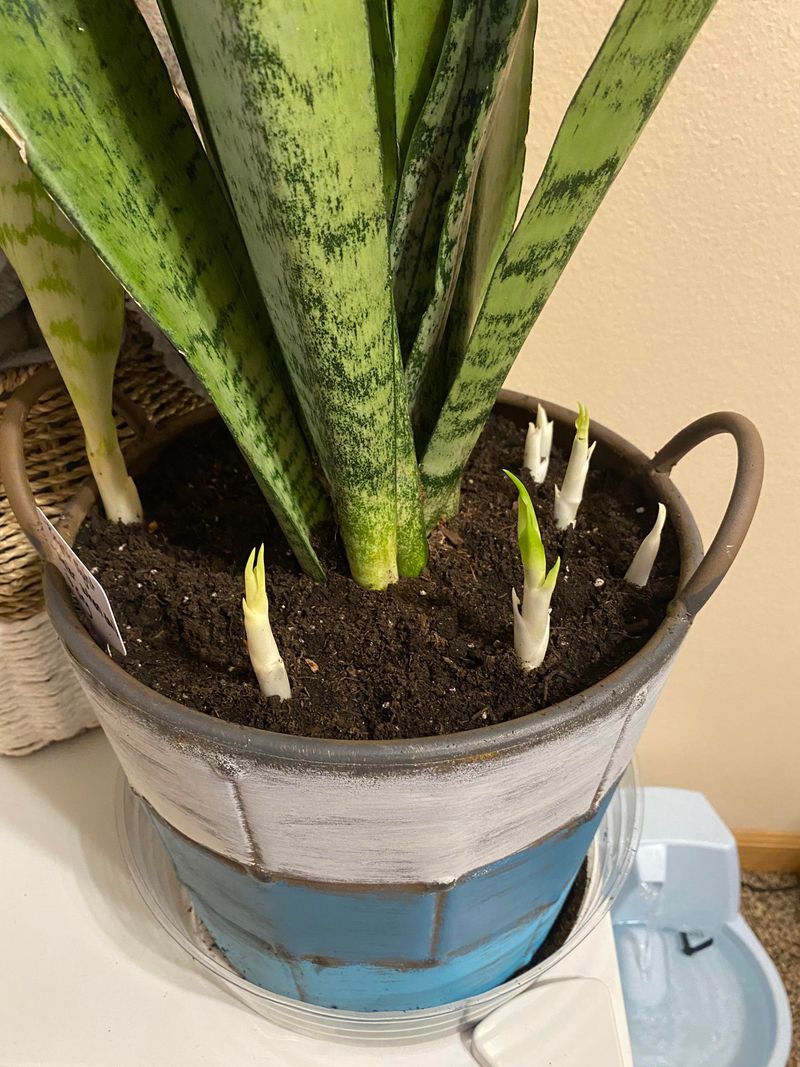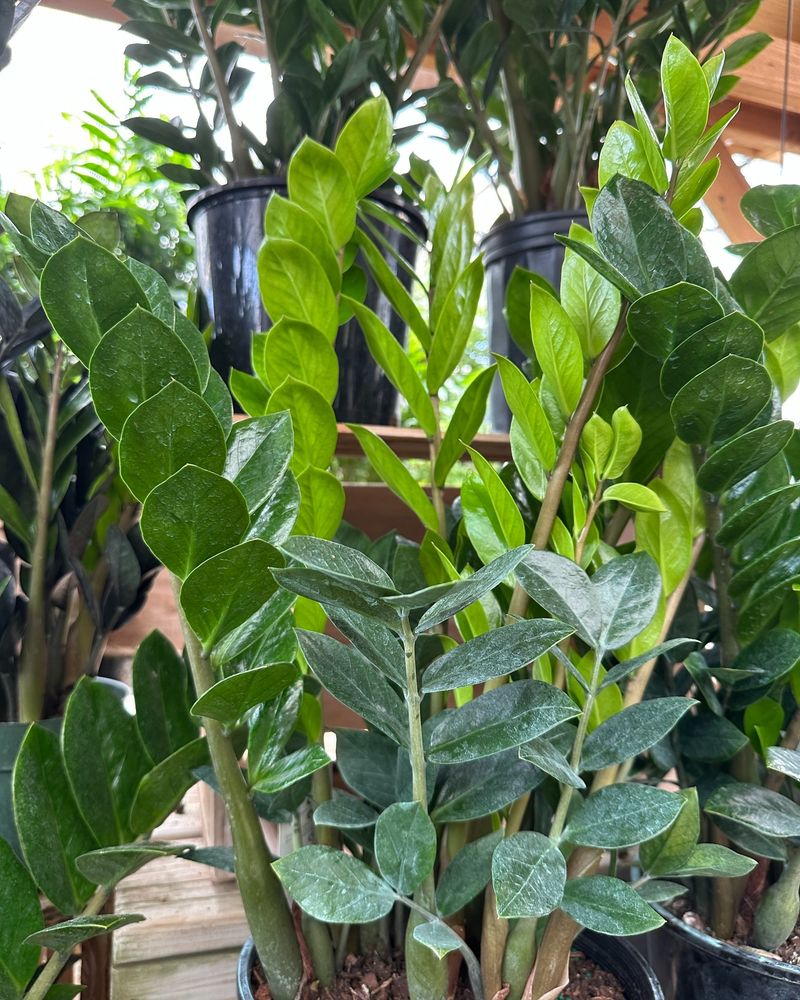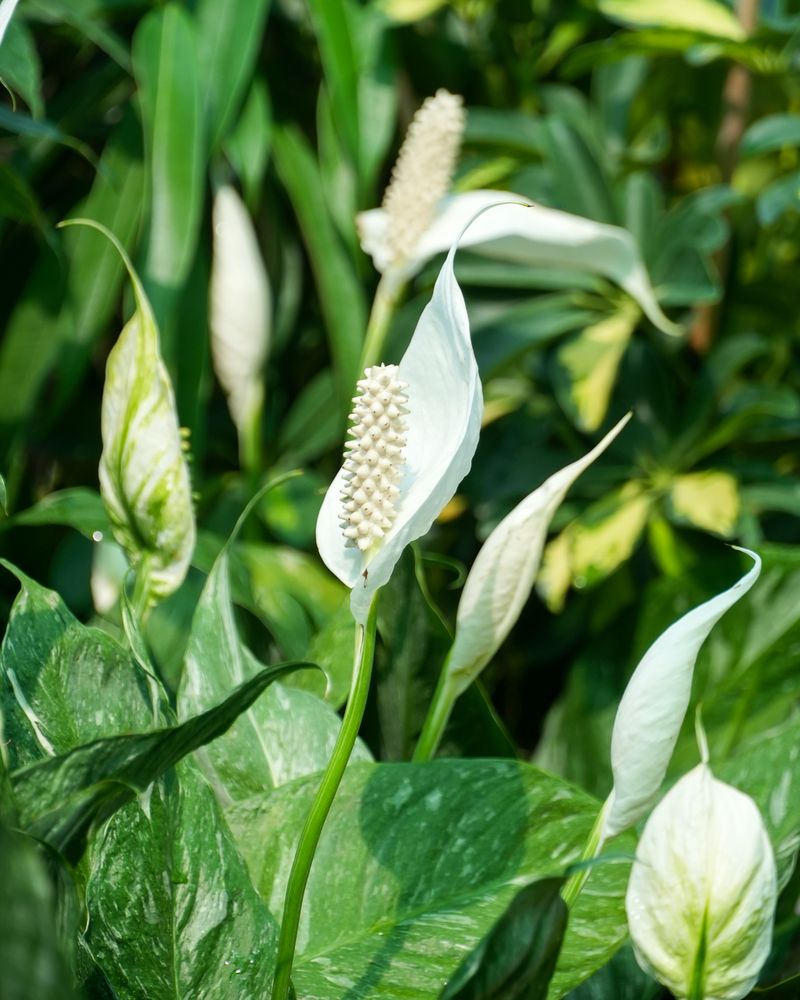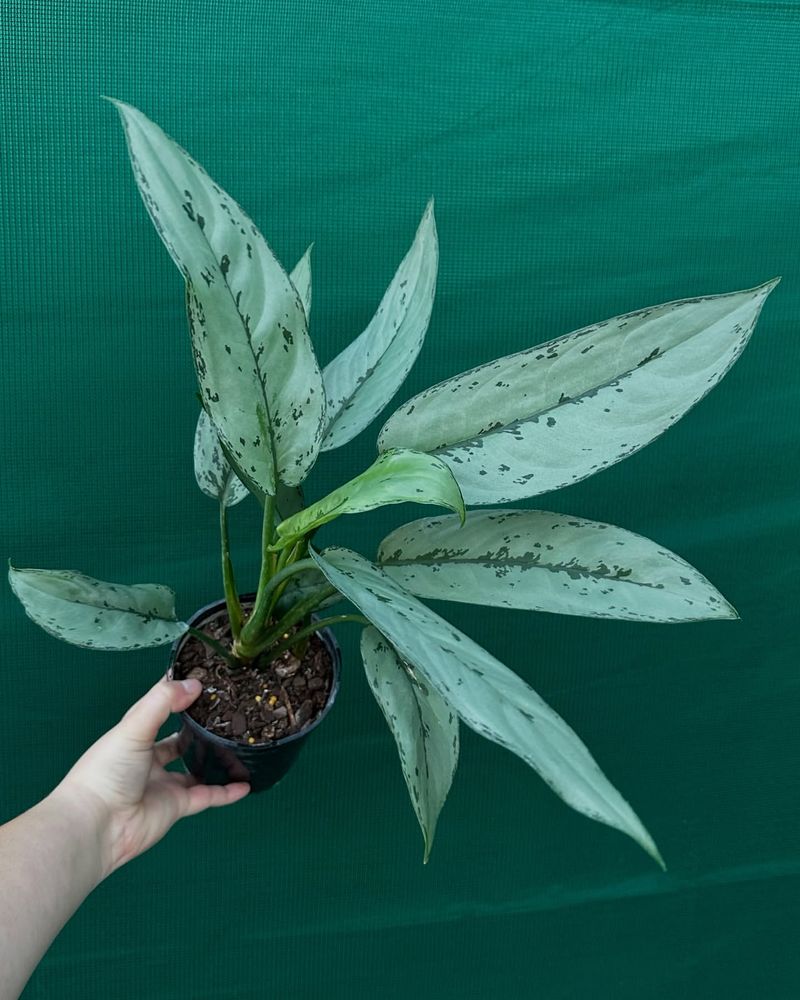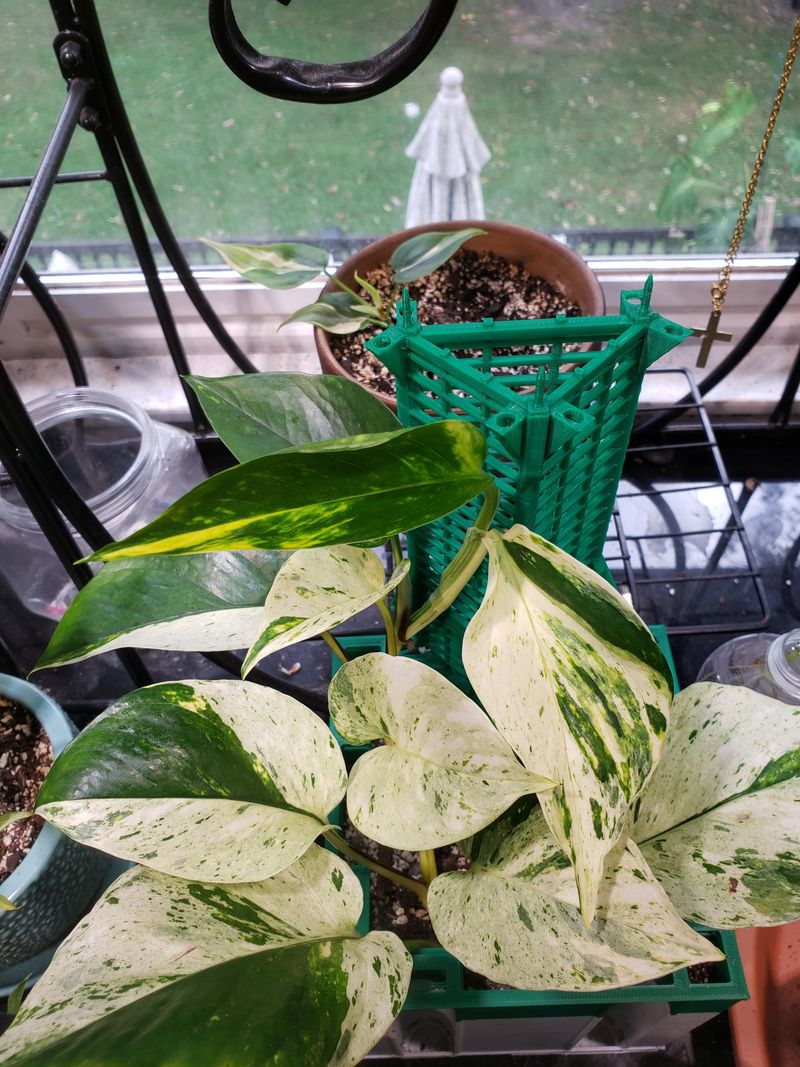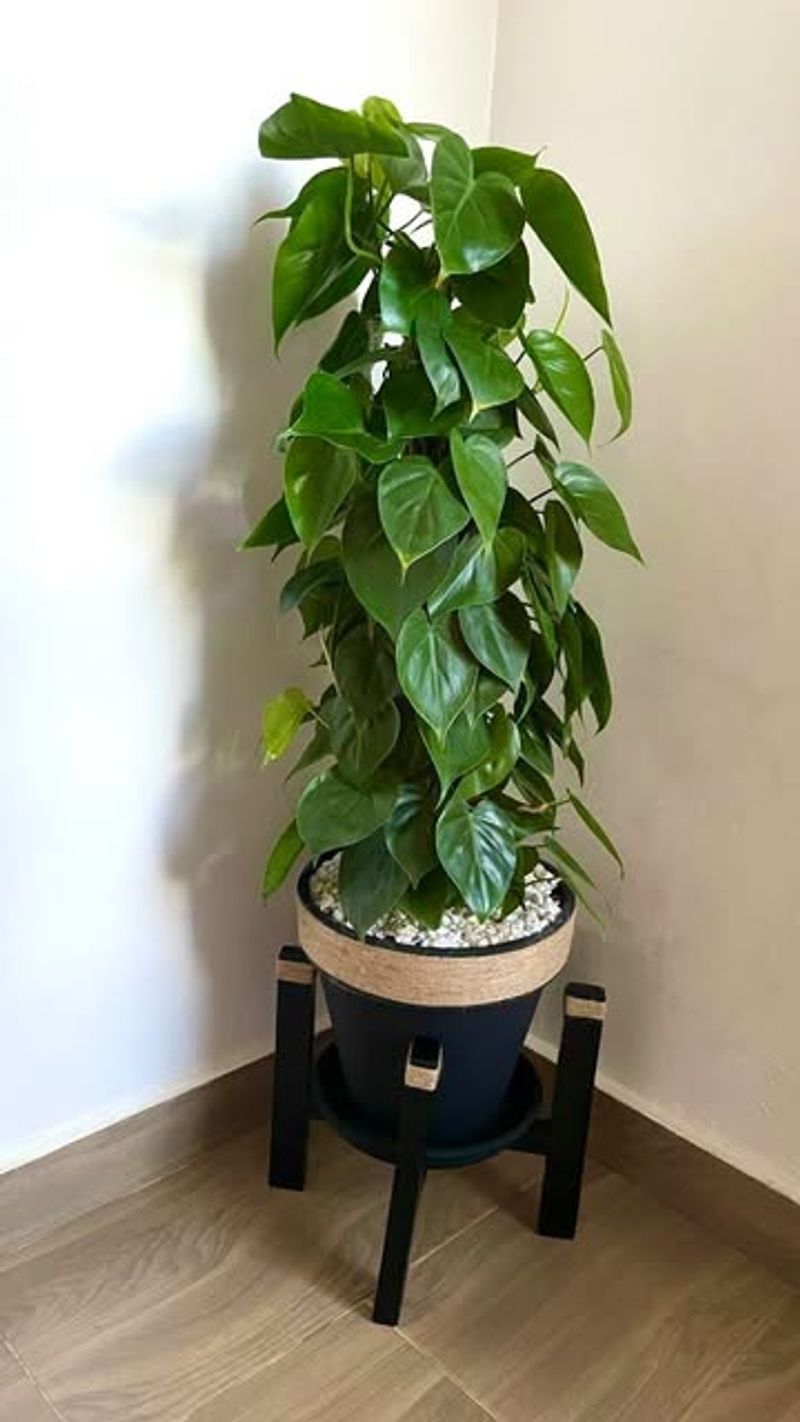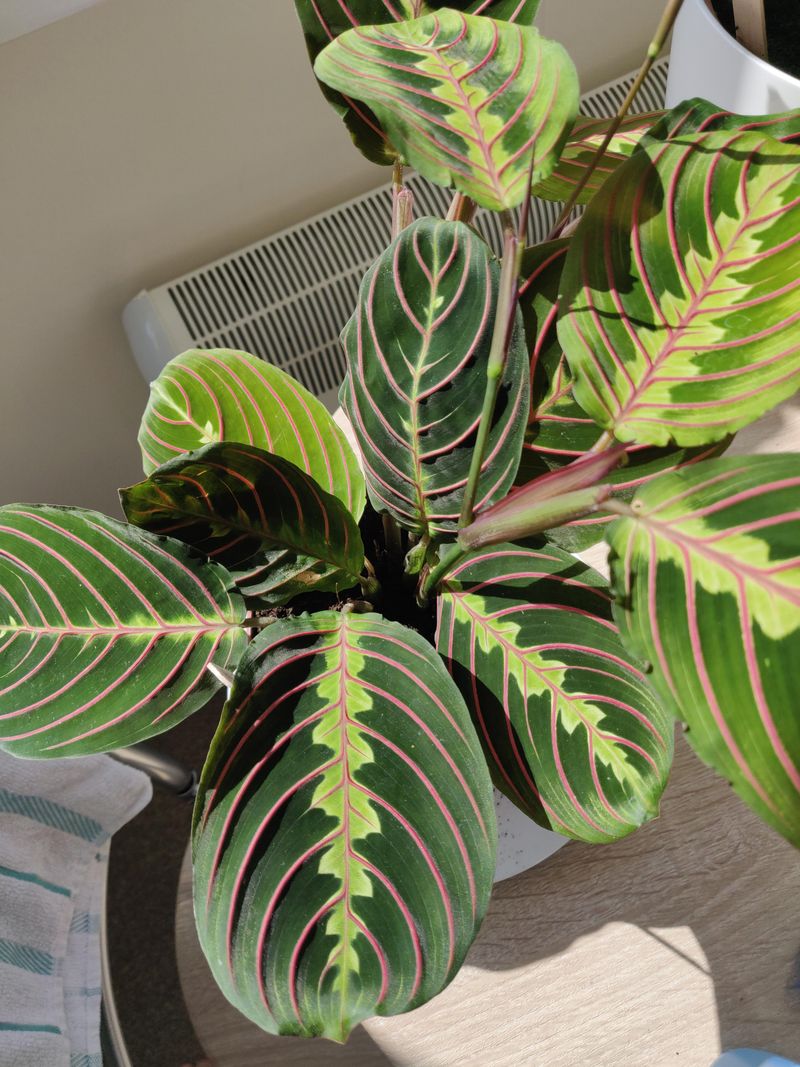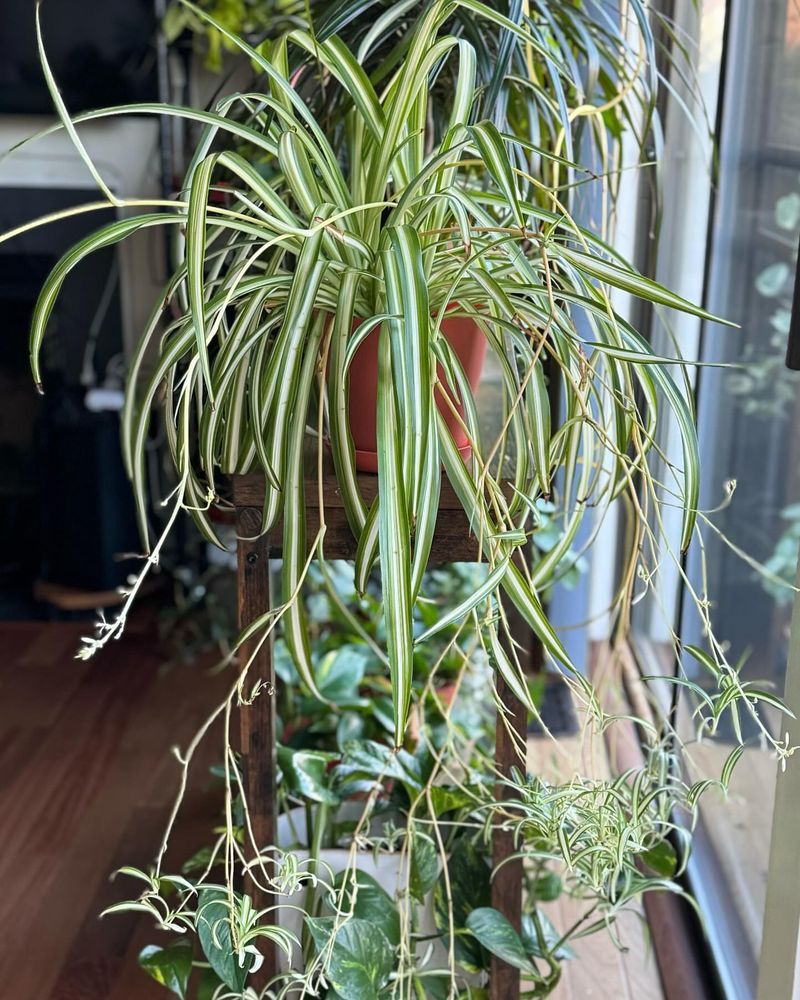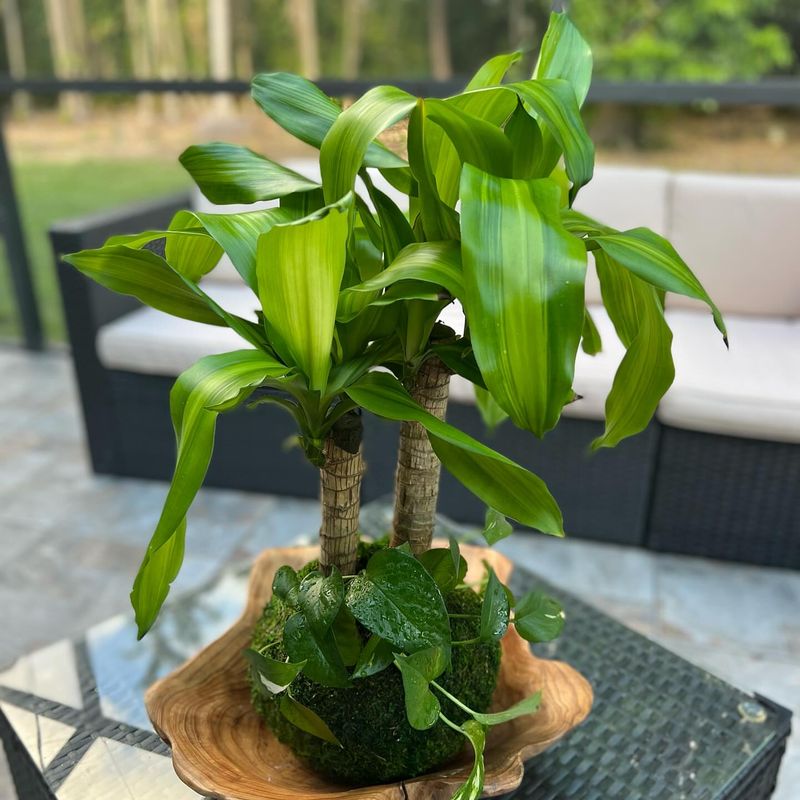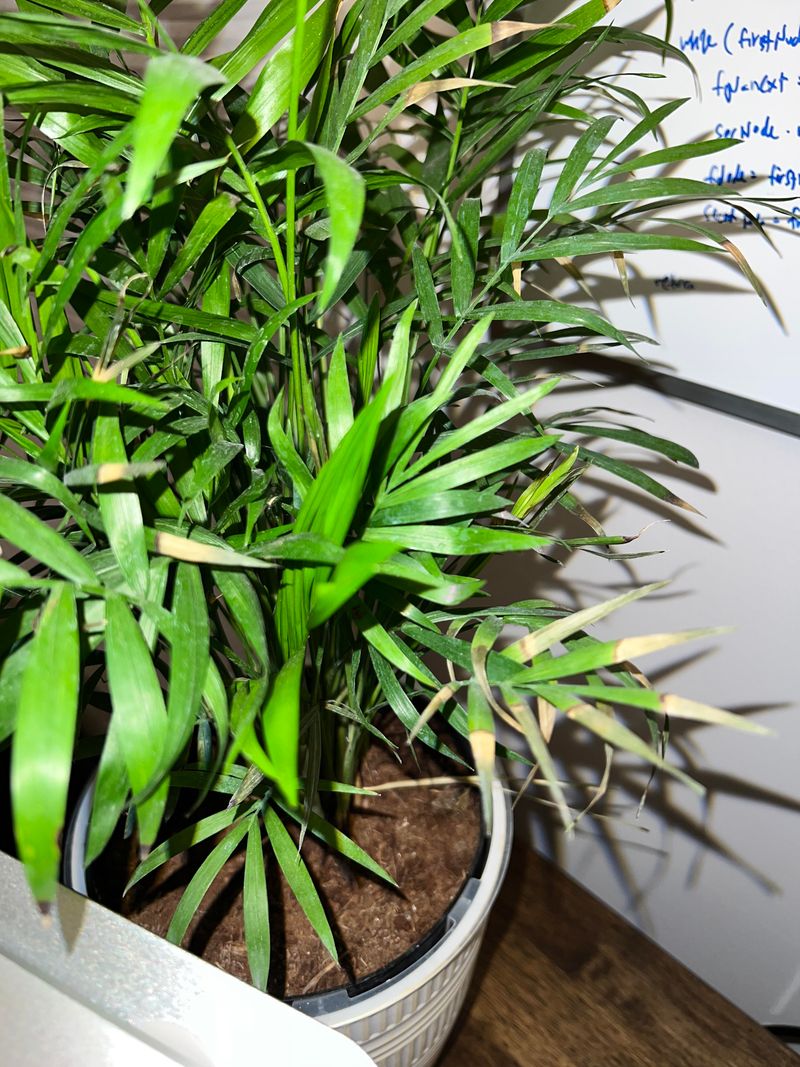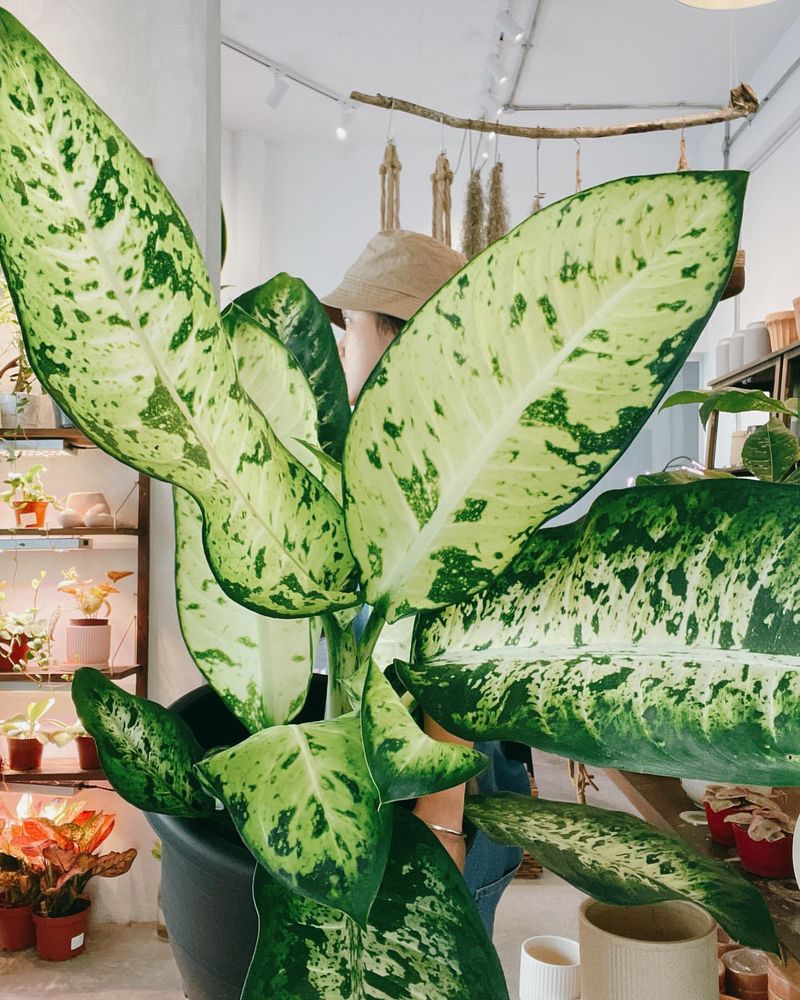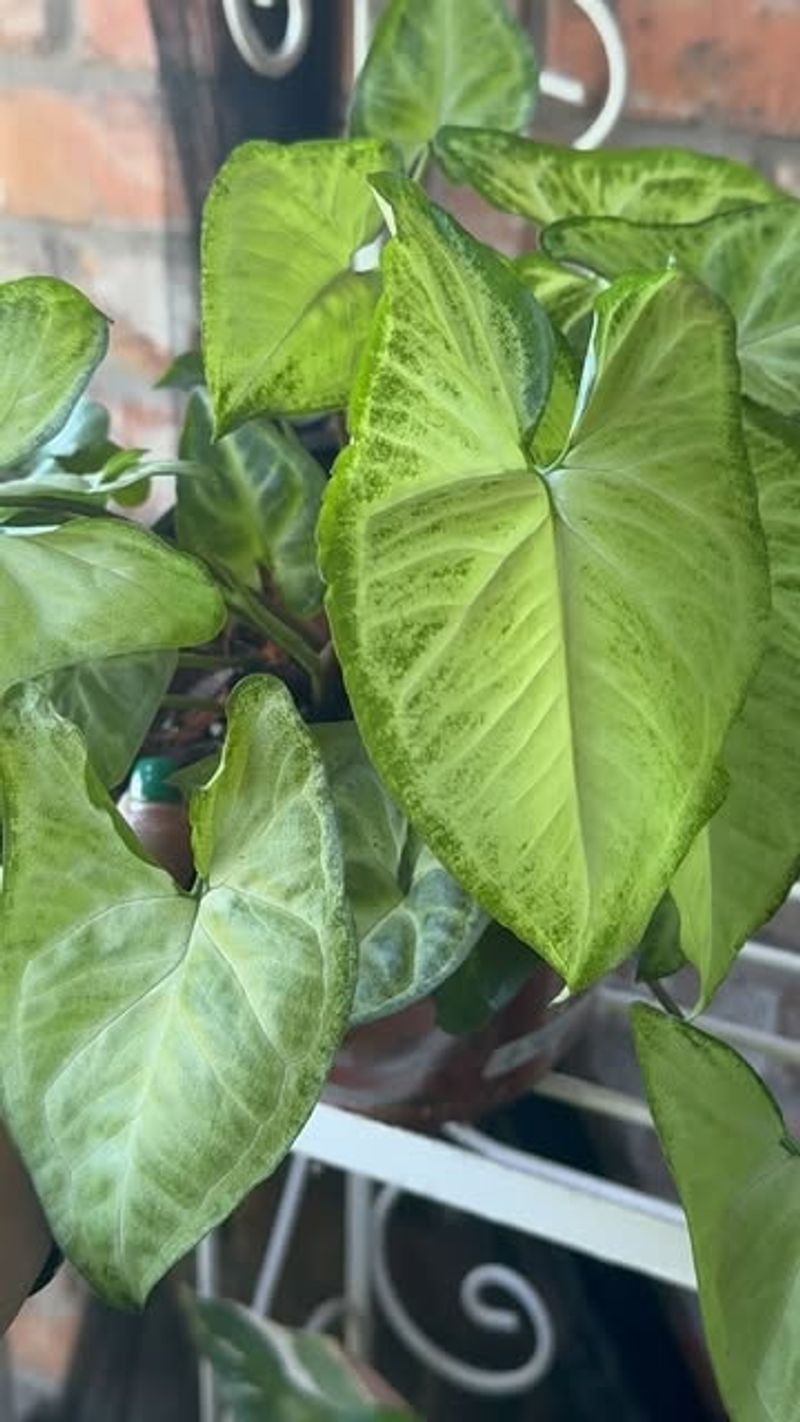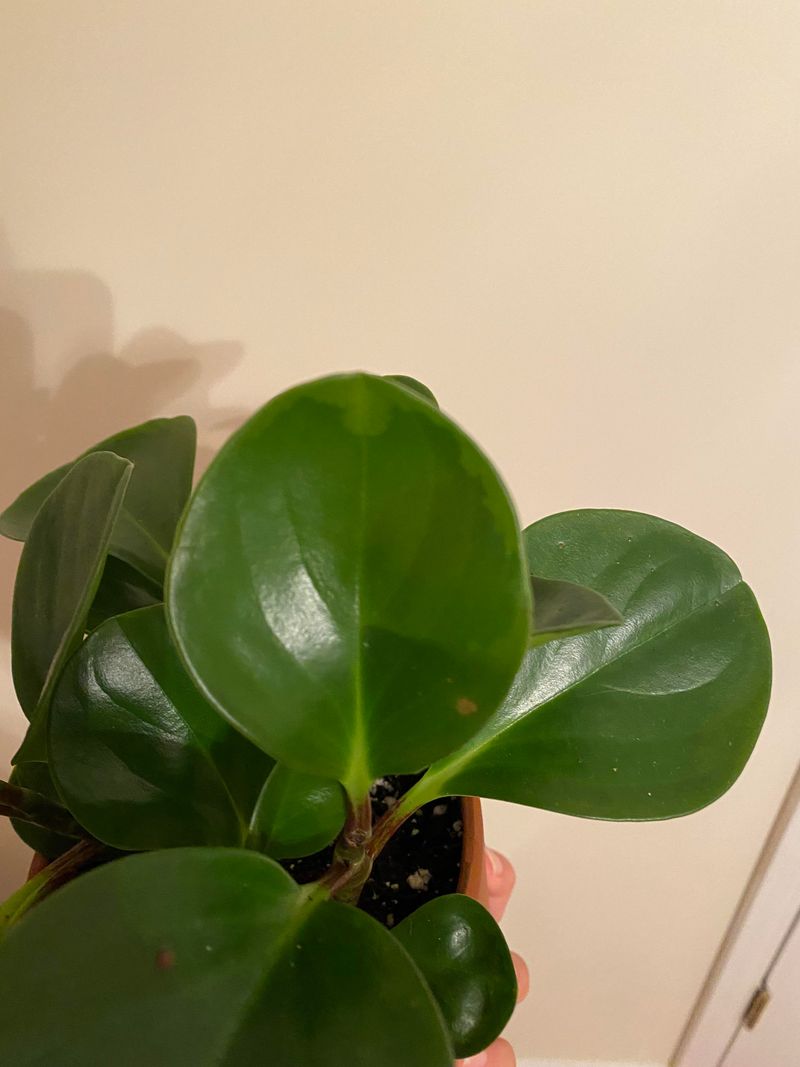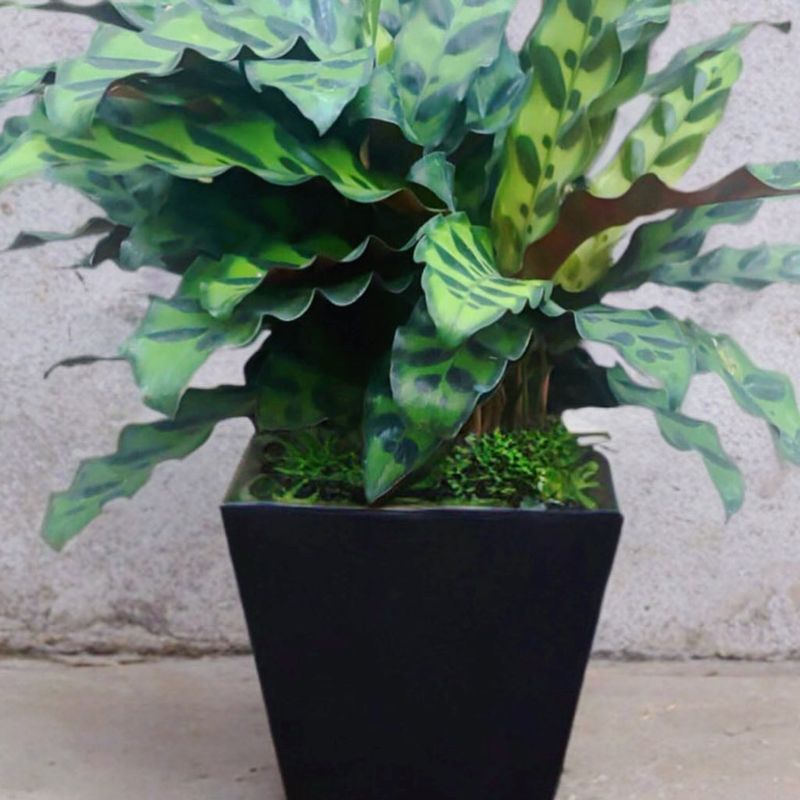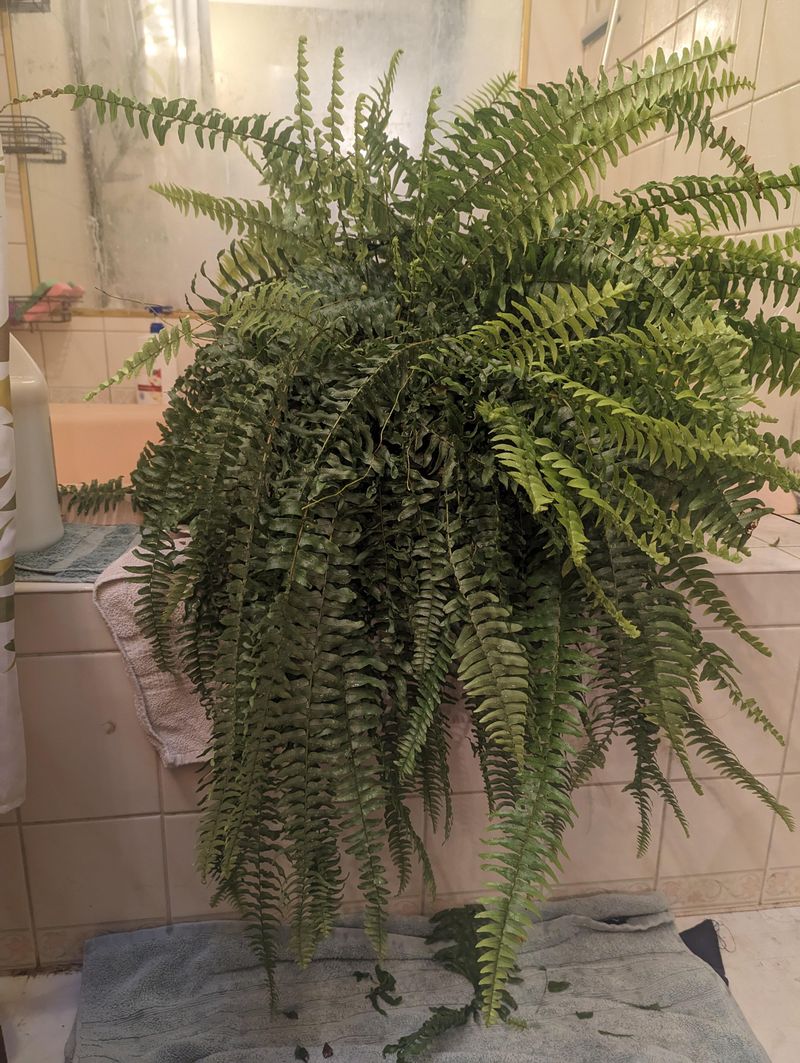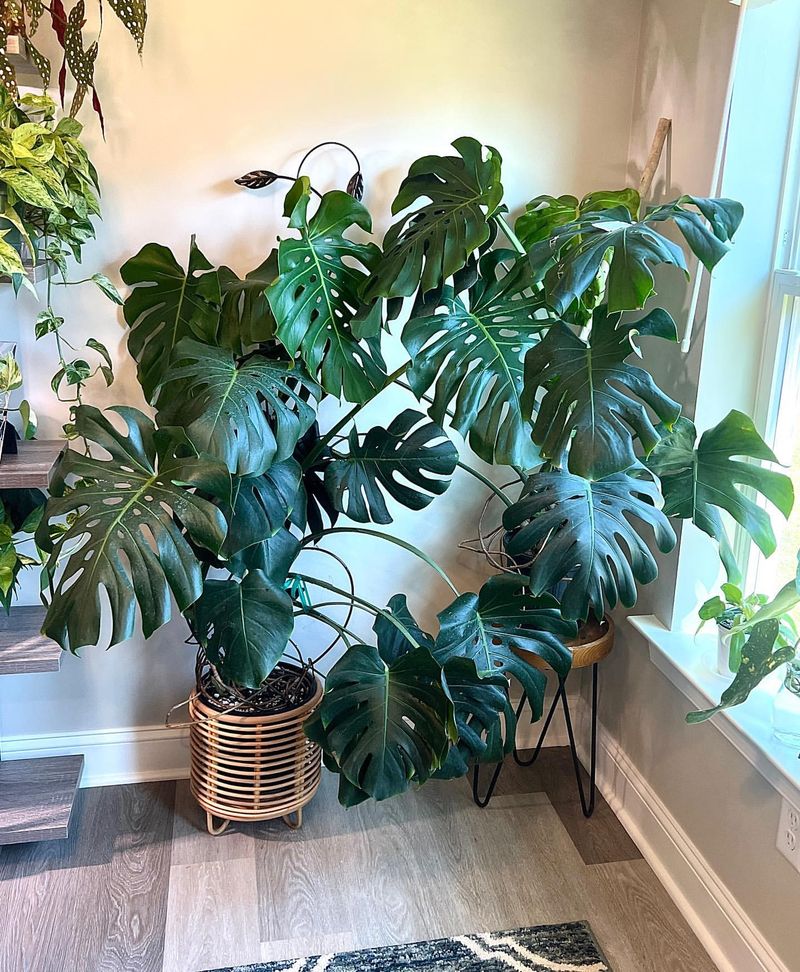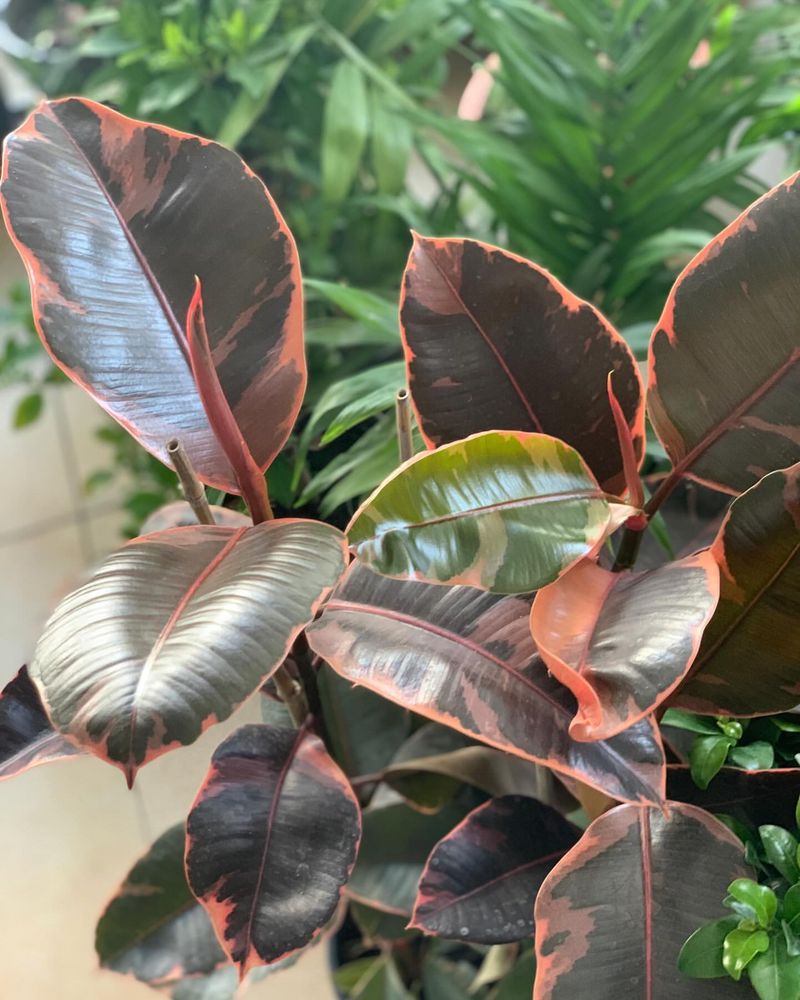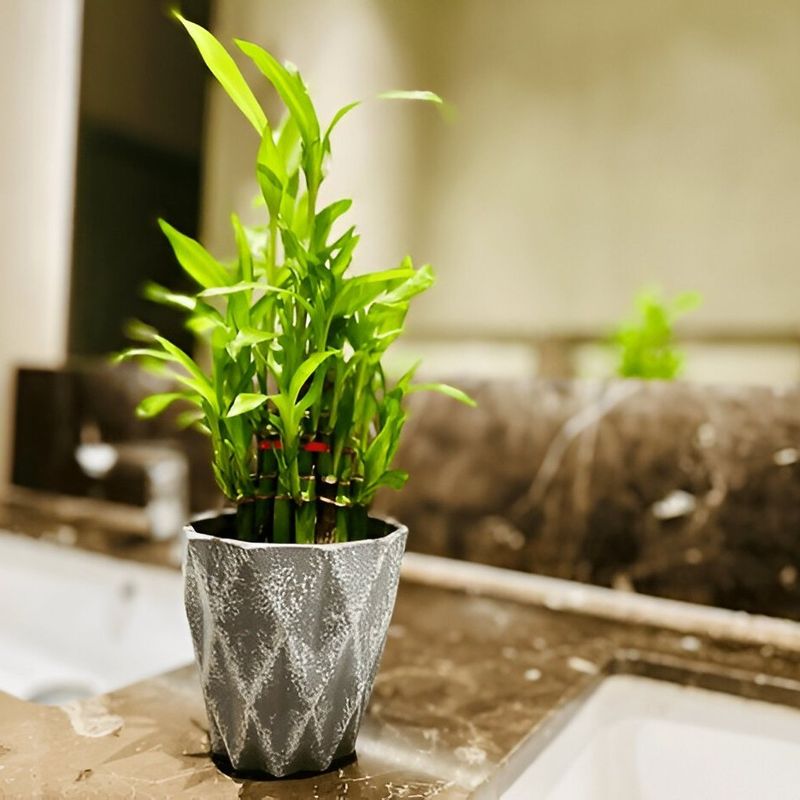Living in Indiana means dealing with shorter daylight hours during our long winters and often limited natural light in our homes. Many Hoosiers believe tropical plants need bright, direct sunlight to survive, but that’s actually not true for all varieties!
I’ve spent years experimenting with different plants in my north-facing Indiana apartment, and discovered numerous tropical species that not only tolerate but genuinely prefer those shadier spots. The secret lies in understanding which plants naturally grow beneath dense forest canopies in their native habitats.
Whether you’re in a classic Indianapolis bungalow with small windows or a modern Bloomington apartment with limited light exposure, these tropical beauties offer a perfect solution for bringing lush greenery into your Indiana home without fighting our natural light limitations.
1. Snake Plant (Sansevieria)
Native to West African tropical forests, these upright beauties naturally grow in dappled light beneath tree canopies. Their architectural form brings instant style to any dim Indiana corner.
During winter months when Indiana homes get even less natural light, snake plants continue growing steadily. I’ve had one thriving in my bathroom for five years with just a tiny north-facing window.
Too much direct sunlight actually burns their leaves, making them perfect candidates for those shadowy spots in your home where other plants struggle.
2. ZZ Plant (Zamioculcas zamiifolia)
Originally from drought-prone areas of Eastern Africa, ZZ plants evolved to store water in their thick stems and survive in minimal light. Their glossy, deep green leaves maintain color even in the darkest Indiana home corners.
Unlike fussier tropicals, ZZ plants rarely show stress from low light conditions. The naturally low light levels in many Indiana homes during winter months won’t faze these tough plants one bit.
Monthly watering is usually sufficient, making them perfect for busy households or frequent travelers.
3. Peace Lily (Spathiphyllum)
Hailing from tropical rainforests where they grow beneath dense canopies, peace lilies actually prefer the filtered light common in Indiana homes. Their elegant white blooms appear even in low light conditions, unlike many flowering plants.
Peace lilies serve as natural humidity gauges in dry Indiana winter homes. When leaves droop slightly, it’s time to water – they bounce back within hours.
My grandmother kept one in her Indianapolis home for decades in a north-facing room that barely got any direct light.
4. Chinese Evergreen (Aglaonema)
Found naturally in the dim understory of Southeast Asian forests, Chinese evergreens have adapted to survive with minimal light. Their variegated leaves bring color to dark Indiana corners where other plants would fail.
During Indiana’s gray winter months, these plants maintain their vibrant patterns without stretching or losing color. The higher indoor humidity from closed windows actually benefits them.
Different varieties offer silver, pink, or red leaf patterns, all performing equally well in low light.
5. Pothos (Epipremnum aureum)
Adaptable pothos vines naturally climb up tree trunks in tropical forests, receiving minimal filtered light. Their trailing habit makes them perfect for Indiana bookshelves or mantels away from windows.
Golden pothos varieties maintain their variegation even in low light, though the patterns may become more subtle. The naturally filtered light in many Indiana homes during cloudy days provides ideal growing conditions.
These hardy plants forgive inconsistent watering, a bonus during busy holiday seasons when plant care often gets neglected.
6. Philodendron Heartleaf (Philodendron hederaceum)
Evolved to climb tropical trees in dappled light, heartleaf philodendrons naturally seek out shadier spots. Their heart-shaped leaves remain lush even in the limited light conditions common in many Indiana homes.
Unlike sun-loving plants, philodendrons grow steadily in low light without becoming leggy. The consistent indoor temperatures in Indiana homes during winter provide ideal growing conditions despite reduced light.
These plants clean indoor air effectively, a welcome benefit during sealed-up Indiana winter months when fresh air is limited.
7. Cast Iron Plant (Aspidistra elatior)
Nicknamed for its incredible durability, this Japanese native grows naturally in deep forest shade. Its leathery, arching leaves handle the lowest light levels found in Indiana homes without complaint.
Cast iron plants evolved specifically to thrive in conditions other plants find challenging. Even the north-facing rooms in traditional Indiana homes provide sufficient light for these tough plants to grow slowly but steadily.
Temperature fluctuations common near Indiana windows during winter don’t bother these resilient plants one bit.
8. Prayer Plant (Maranta leuconeura)
Adapted to grow on tropical forest floors with minimal light, prayer plants perform a fascinating daily leaf movement. Their leaves fold upward at night like hands in prayer, then flatten during daylight hours.
The naturally lower light levels in Indiana homes actually prevent leaf burn that can happen in direct sun. Their distinctive red veins and patterned leaves add visual interest to dark corners.
Prayer plants appreciate the higher humidity created in Indiana homes during winter when windows stay closed and heating runs constantly.
9. Spider Plant (Chlorophytum comosum)
Despite their reputation as bright light plants, spider plants actually evolved in dappled forest light conditions. Their arching variegated leaves maintain pattern even in the limited light of many Indiana homes.
Spider plants produce their famous “babies” even in low light, though perhaps fewer than in brighter conditions. The consistent indoor environment of Indiana homes during winter provides stable growing conditions.
These air-purifying champions remove formaldehyde and other toxins, especially helpful in tightly-sealed Indiana homes during cold months.
10. Dracaena (Dracaena fragrans)
Growing naturally under the canopy of African forests, dracaenas have adapted to thrive in filtered light. Their tall, architectural form works beautifully in those dark Indiana home corners that need height and drama.
Corn plants (a popular dracaena variety) actually develop leaf burn in direct sun. The naturally diffused light in most Indiana homes creates ideal growing conditions for these striking plants.
Their upright growth habit means they don’t take up much floor space, perfect for smaller Indiana apartments or homes with limited room.
11. Parlor Palm (Chamaedorea elegans)
Originally found growing in the understory of rainforests in Guatemala and Mexico, parlor palms naturally prefer dappled light. Their delicate fronds bring tropical flair to Indiana homes without demanding bright windows.
Unlike many palms that need direct sun, parlor palms evolved specifically for low-light forest conditions. They grow slowly but steadily in the consistent indoor environment of Indiana homes, even during gray winter months.
These compact palms rarely exceed 4 feet indoors, making them perfect for limited spaces.
12. Dieffenbachia (Dieffenbachia seguine)
Native to tropical American forests where light is filtered through dense canopies, dieffenbachias naturally prefer indirect light. Their broad, patterned leaves create dramatic impact even in the darkest corners of Indiana homes.
During Indiana’s cloudy winter days, these plants continue growing steadily without light stress. The higher humidity in closed-up winter homes actually mimics their natural habitat conditions.
Dieffenbachias come in various sizes, from tabletop varieties to floor specimens reaching 5 feet tall.
13. Arrowhead Plant (Syngonium podophyllum)
Evolving as forest undergrowth plants in Central and South America, arrowhead plants naturally seek shadier spots. Their distinctive arrow-shaped leaves maintain their interesting patterns even in the limited light of many Indiana homes.
As they mature, these plants develop a trailing or climbing habit perfect for Indiana bookshelves or wall spaces away from windows. Young plants have compact forms ideal for tabletops in low-light situations.
Available in green, pink, or white variegations, all varieties perform equally well in low light.
14. Peperomia (Peperomia obtusifolia)
Found naturally growing in the understory of tropical rainforests, peperomias evolved to thrive in low light conditions. Their thick, succulent-like leaves store water, making them forgiving of inconsistent care in busy Indiana households.
The naturally filtered light in many Indiana homes mimics their native habitat perfectly. These compact plants stay small, rarely exceeding 12 inches in height, making them perfect for tight spaces.
Countless varieties exist with different leaf shapes, colors, and patterns – all performing well in low light.
15. Calathea (Calathea spp.)
Adapted to the forest floors of tropical Americas, calatheas perform their famous daily leaf movements even in low light. Their stunning patterned leaves bring visual interest to the shadiest corners of Indiana homes.
Direct sunlight actually fades their beautiful leaf patterns. The naturally filtered light in many Indiana homes, especially during cloudy winter months, provides ideal growing conditions for these shade-loving beauties.
Calatheas appreciate the higher humidity levels found in closed-up Indiana homes during winter months when heating systems run constantly.
16. Boston Fern (Nephrolepis exaltata)
Contrary to common belief, Boston ferns naturally grow in forest understories with minimal direct light. Their delicate fronds bring softness to dark Indiana corners where other plants might struggle.
The lower light levels in many Indiana homes prevent the leaf crisp that can happen in direct sun. Boston ferns actually prefer the cooler temperatures often found in Indiana homes during winter months.
These classic beauties have decorated homes since Victorian times, bringing timeless elegance to any Indiana interior.
17. Monstera (Monstera deliciosa)
Starting life on tropical forest floors before climbing trees, young monsteras are adapted to low light conditions. Their iconic split leaves develop their distinctive holes even in the limited light of many Indiana homes.
While they’ll grow faster in bright indirect light, monsteras grow steadily even in darker Indiana corners. The consistent indoor temperatures in Indiana homes during winter provide stable growing conditions despite reduced light.
Their dramatic leaf form creates instant tropical impact in any Indiana interior.
18. Rubber Plant (Ficus elastica)
Evolving as understory trees in Southeast Asian forests, rubber plants naturally grow in filtered light. Their glossy, burgundy-green leaves create dramatic statements even in the darkest corners of Indiana homes.
Rubber plants actually develop leaf burn in direct sunlight, making them perfect for north-facing Indiana windows. Their upright growth habit creates vertical interest without taking up much floor space in smaller Indiana apartments.
The burgundy varieties maintain their rich color even in low light conditions.
19. Lucky Bamboo (Dracaena sanderiana)
Despite its name, lucky bamboo isn’t bamboo at all but a water-tolerant dracaena native to shaded tropical forests. Its distinctive spiral or straight stems bring Asian-inspired elegance to low-light Indiana home corners.
Growing naturally in the shade of forest canopies, lucky bamboo actually prefers the filtered light common in many Indiana homes. These plants can grow in water alone, eliminating soil mess – perfect for clean-conscious Indiana households.
According to Feng Shui principles, they bring positive energy to any space.

